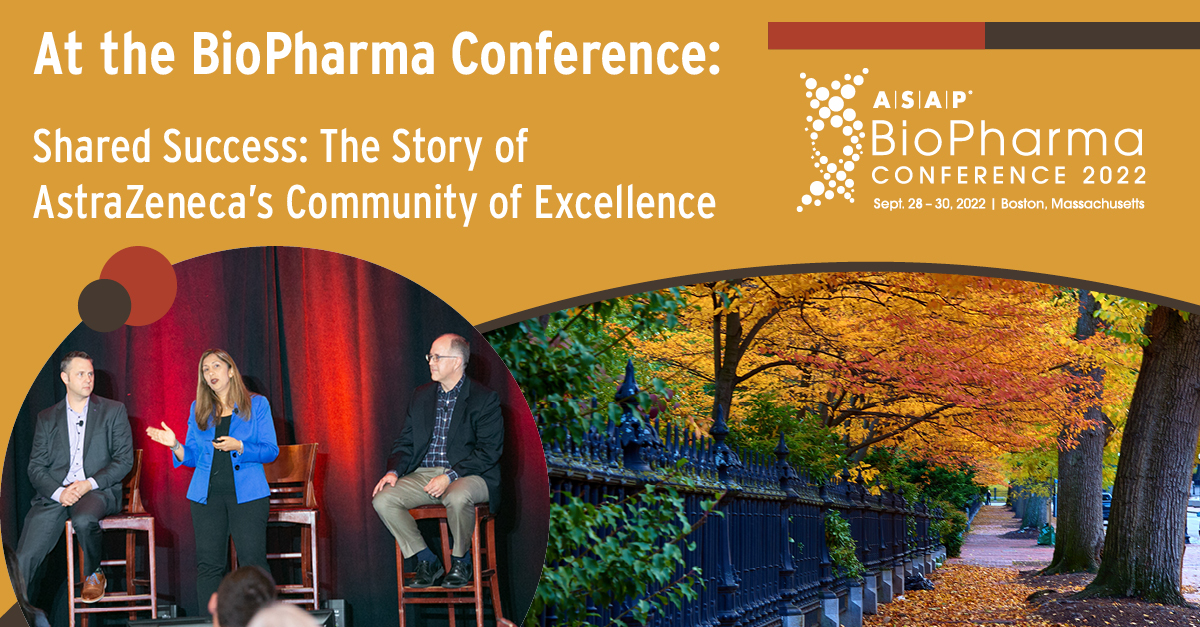Shared Success: The Story of AstraZeneca’s Community of Excellence
What happens when you mix a Center of Excellence with a Community of Practice? You get a Community of Excellence (COE), which is what Big Pharma institution AstraZeneca calls its primary vehicle for sharing best practices across alliance management teams. Long an alliance-minded organization, the UK-based Goliath hatched this initiative in 2018 with the goal of not only making its knowledge and resources available in a central location but actively imparting it across therapeutic areas and other divisions.
“What we’re not focusing on is developing or communicating a single set of tools, practices, [and] templates that everyone must follow. Rather, [it’s] a more flexible approach, which is fit for purpose depending on the therapeutic areas an alliance management team is supporting, and taking into consideration the alliance’s needs and partner capabilities,” said David Vallo, CA-AM, head of biopharmaceuticals R&D alliance management at AstraZeneca, as he kicked off the 2022 ASAP BioPharma Conference session “Strive to Thrive: Realizing Value Through the Establishment of an Alliance Management Community of Excellence.”
“Simple, Lean, and Efficient”: The Entrepreneurial Approach to Spreading Best Practices
AstraZeneca’s four core objectives for its COE don’t differ much from others in the pharmaceutical industry: 1) enhancing and optimizing best practices, 2) aligning with corporate strategy as it evolves, 3) promoting professional development and continuous learning, and 4) refining innovative systems and capabilities over time. However, the company did put a unique spin on how those principles are put into practice. The company’s alliance management group takes an “entrepreneurial approach” in keeping the COE operation “simple, lean, and efficient,” according to Aida Bendt, CA-AM, head of oncology R&D alliance management at AstraZeneca.
Two alliance managers from different teams cochair bimonthly gatherings of the rest of their partnering cohort, which spans all of the company’s therapeutic areas and includes employees from other divisions who are integral to partnership operations. This group discusses commonalities, challenges, and observations in their day-to-day affairs and shares key learnings that could potentially benefit their peers.
While each therapeutic area has its own set of characteristics and best practices, COE meeting participants soon saw that there was a lot more overlap in their affairs than anyone ever realized. Prior to the COE’s 2018 launch, each group primarily did their own thing. Over time, they saw that some teams were working with the same partner organization, while folks across the entire practice were encountering similar challenges. For example, one alliance manager was flummoxed when a joint asset was being returned to a partner company, a situation that person had yet to experience. It turned out a colleague had already been down this road, and AstraZeneca had tools and established practices to handle it.
Fair Share: It Doesn’t Cost Anything to Obliterate Silos
In fact, the COE now has a comprehensive handbook, toolkit, and central database that cover a host of scenarios like these, which continually get updated to reflect the evolution of the company, partner portfolio, and industry. This includes a section on post-merger integration practices, a contribution that came with AstraZeneca’s 2018 acquisition target Alexion, which now effectively serves as the company’s rare diseases unit.
“The skillset was translatable to alliance management,” said Jason Felsch, CSAP, PhD, head of alliance and integration management at AstraZeneca.
“It has really encouraged our teams to work across each of our areas much more collaboratively, continuously sharing learnings and experiences with one another,” said Bendt, who reiterated that the teams previously hadn’t regularly traded observations prior to the COE’s existence. “We’re not siloed as much as we would be otherwise if we didn’t have this community in place.”
Amazingly, the COE doesn’t cost AstraZeneca a dime—“zero budget,” Bendt stated emphatically. “The resource is just our people investing the time to talk to each other. They’re more productive than they would be otherwise because they’re not reinventing the wheel in so many cases.”
With so much great content still available to ASAP BioPharma Conference registrants, there’s no use reinventing the wheel in any of their activities. They can watch this presentation again to hear Felsch dive deeper into the Alexion acquisition and talk about how the startup’s effective use of partnering practices led it to double in size before being gobbled up by AstraZeneca. Conference attendees can also replay many of the other event sessions, including the keynotes.

